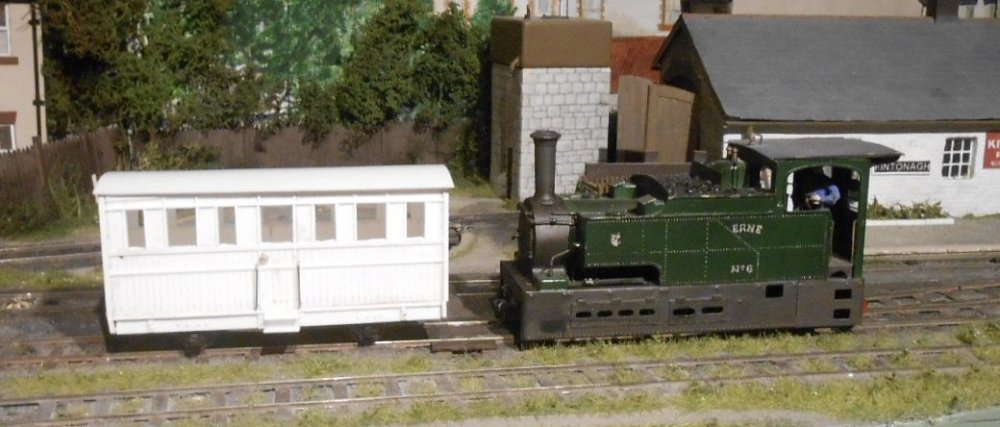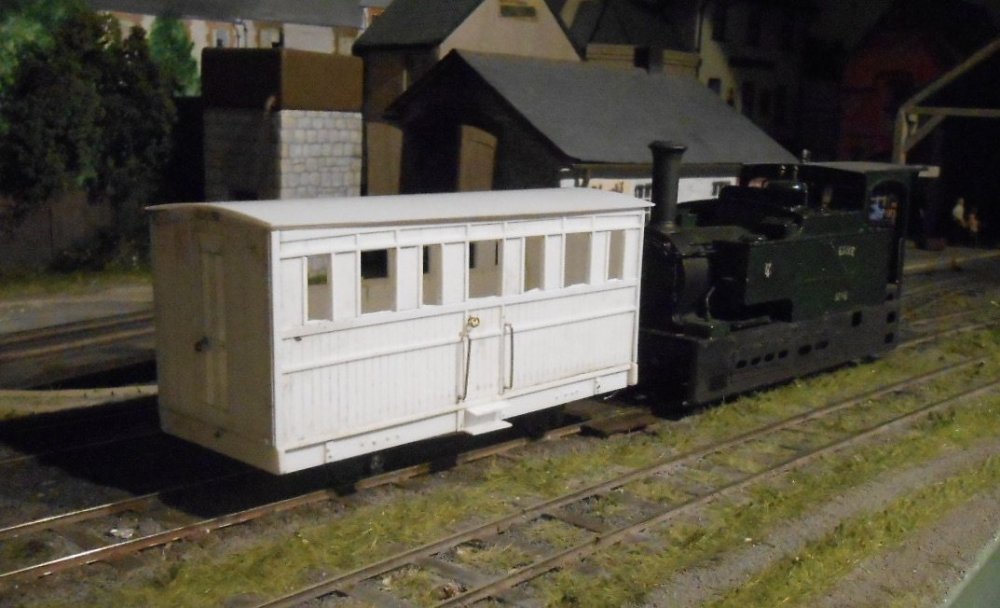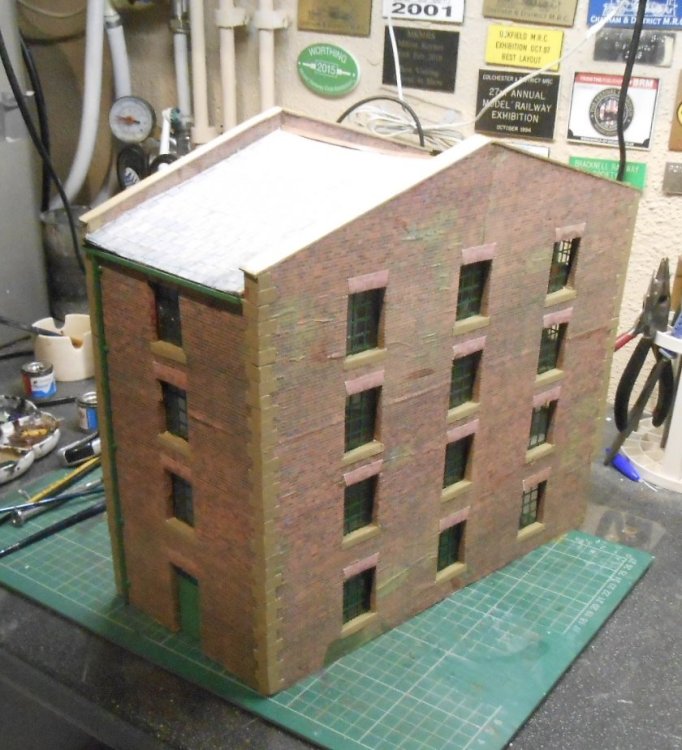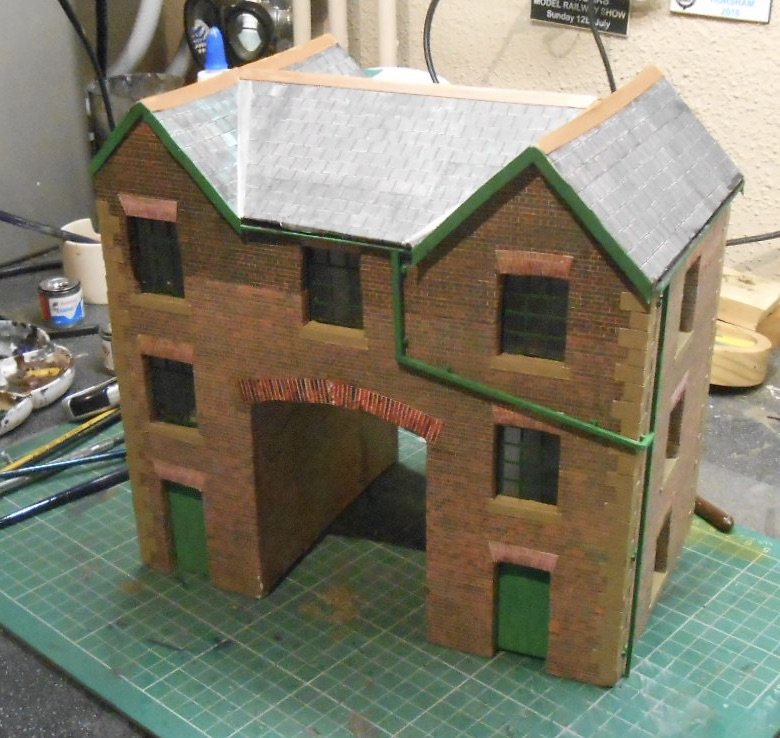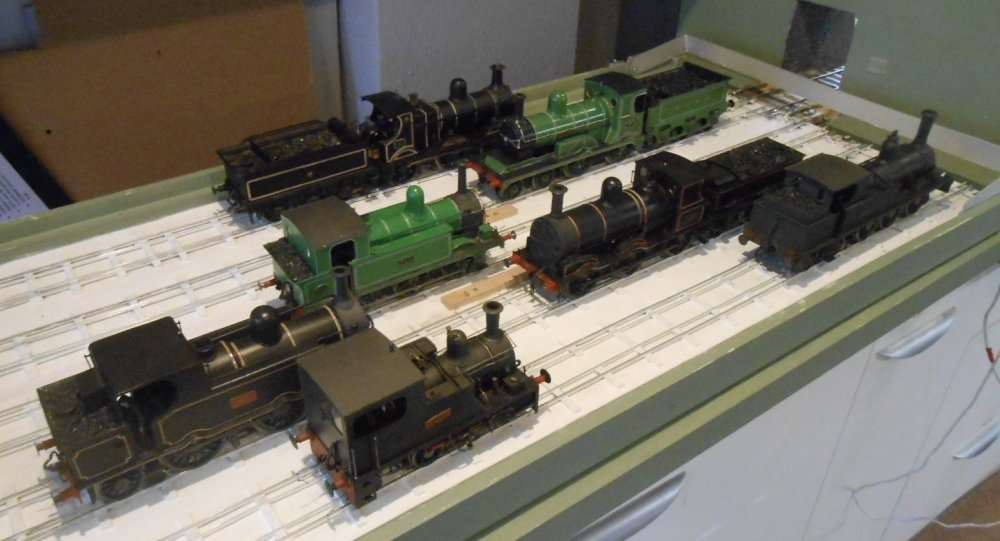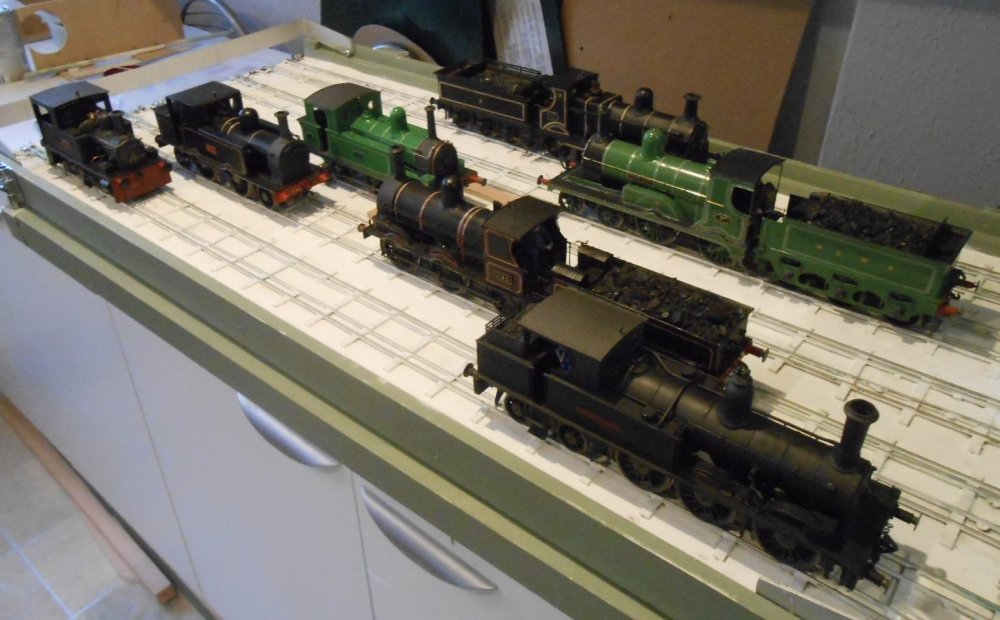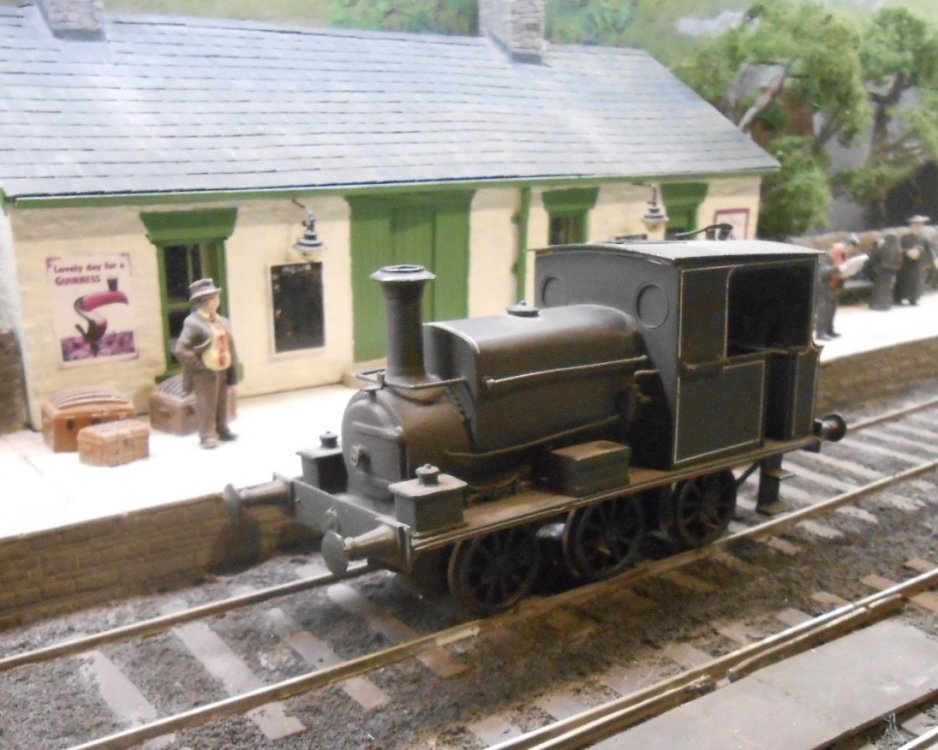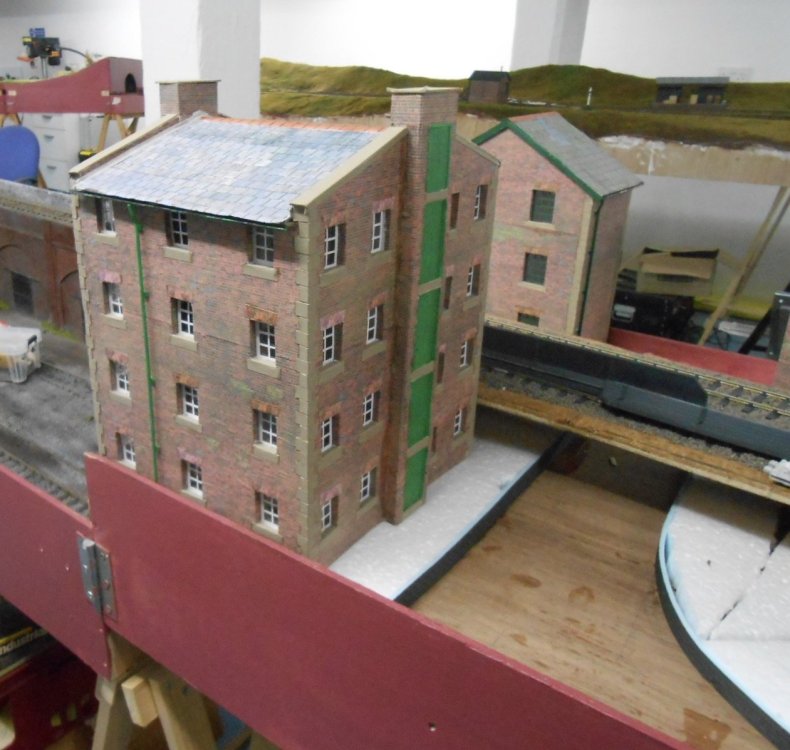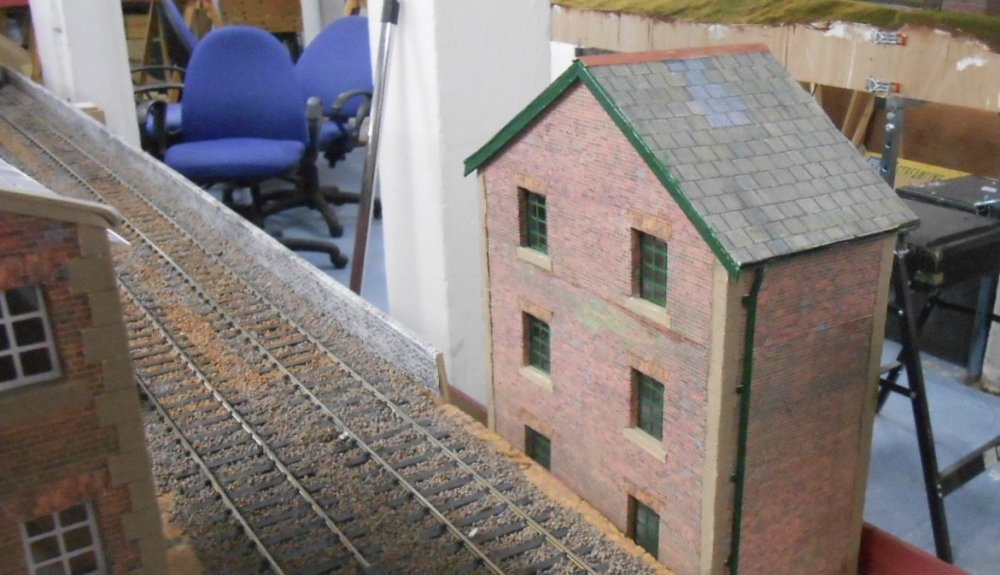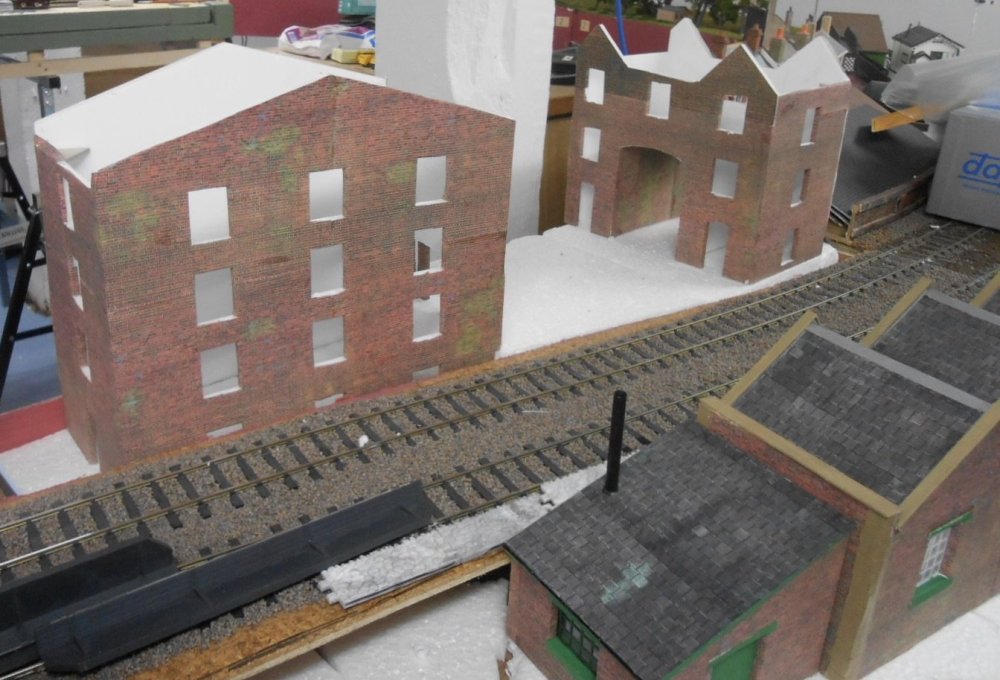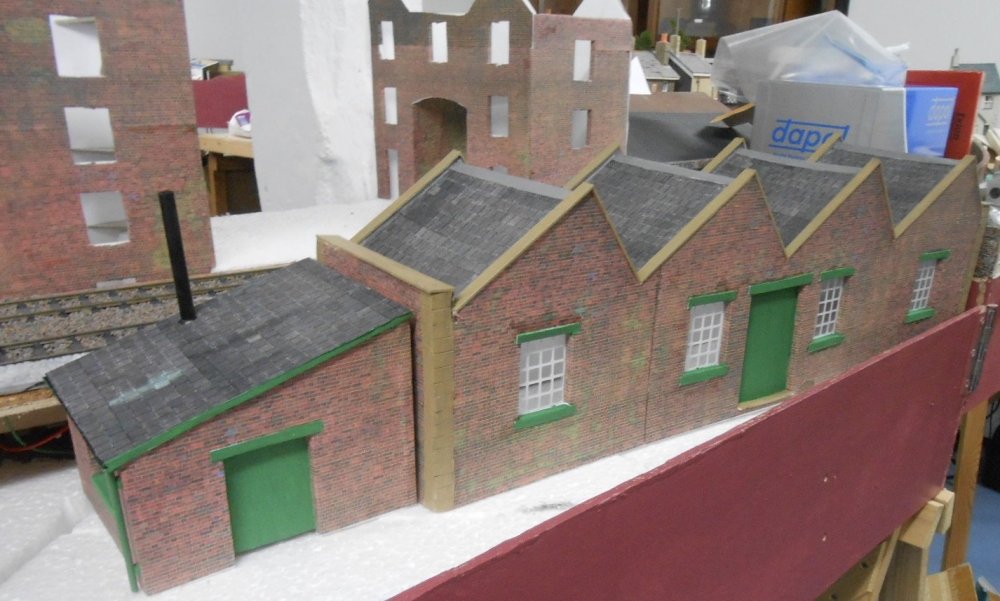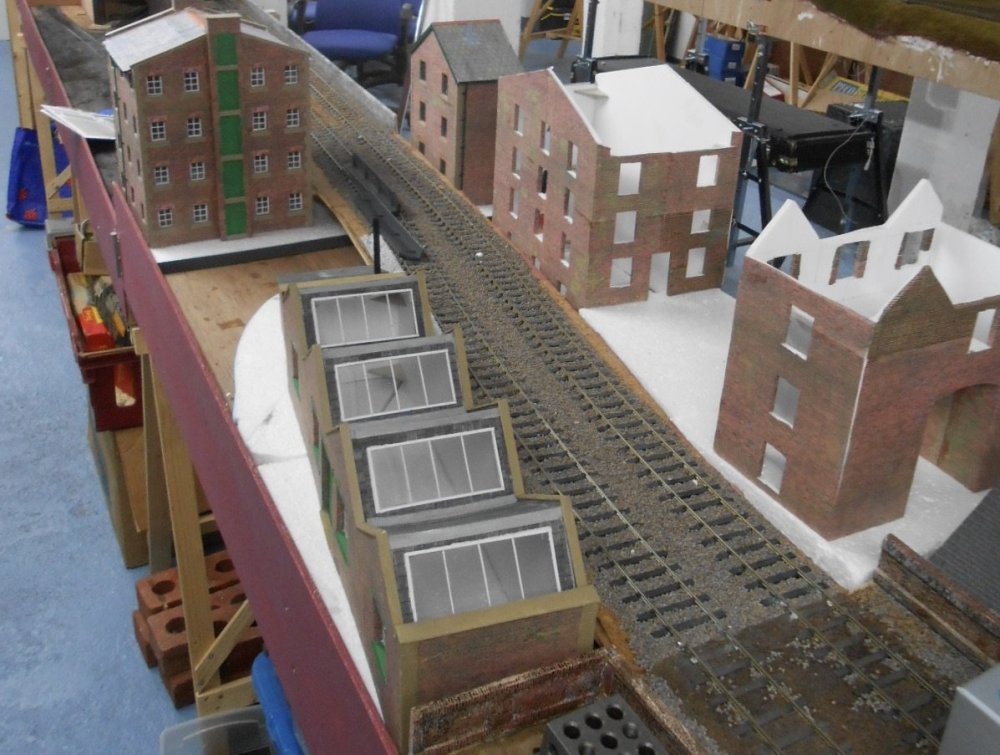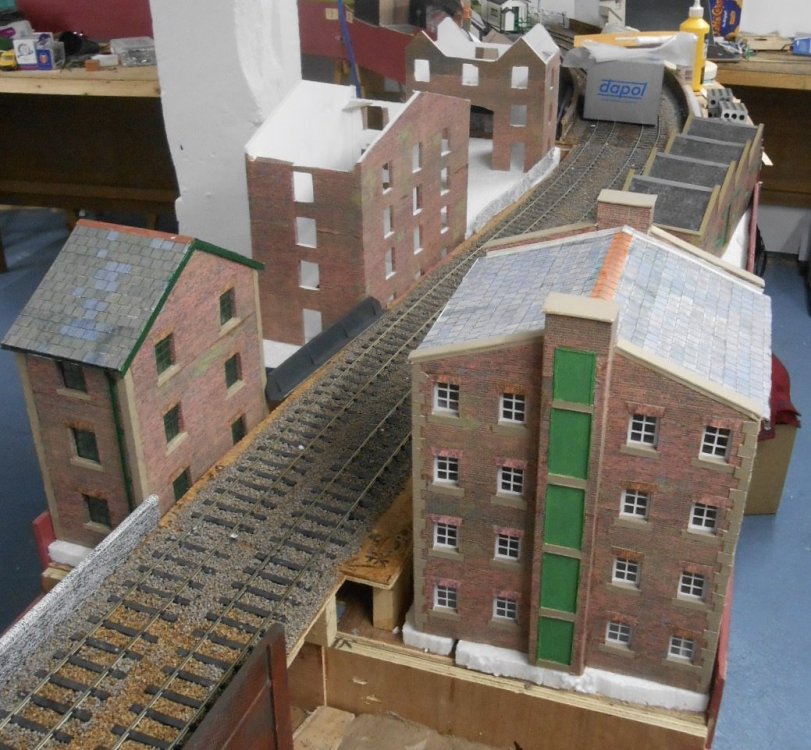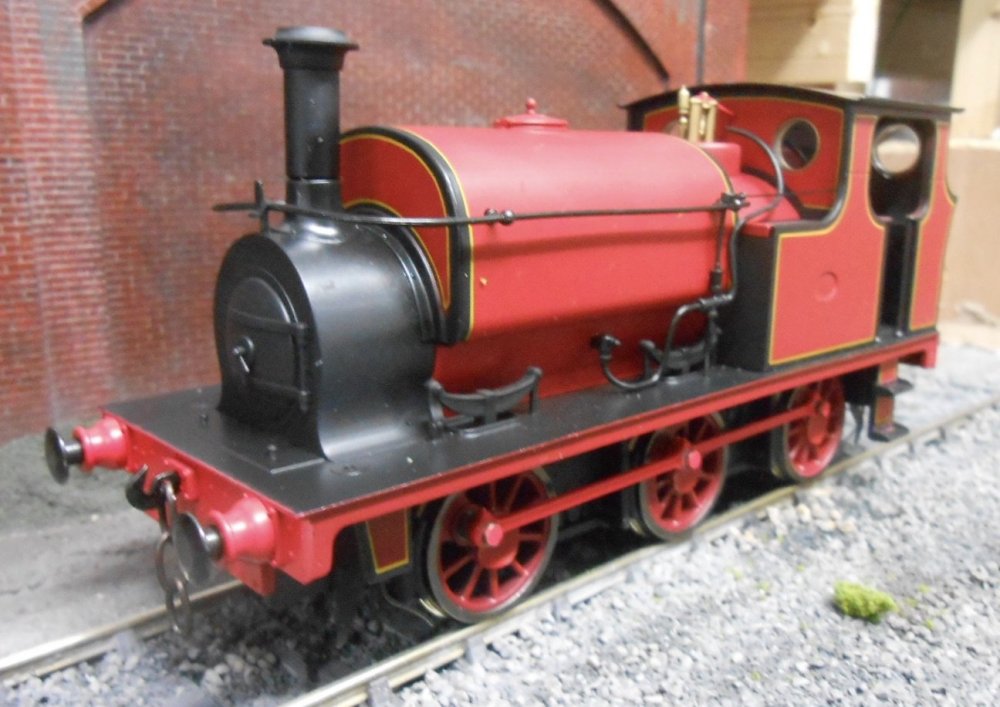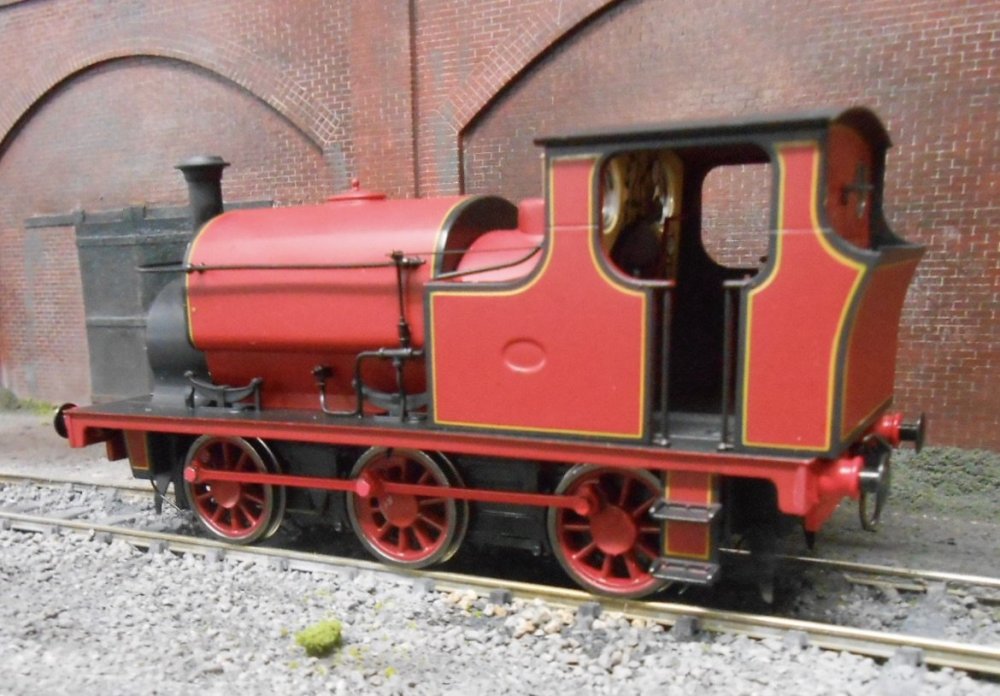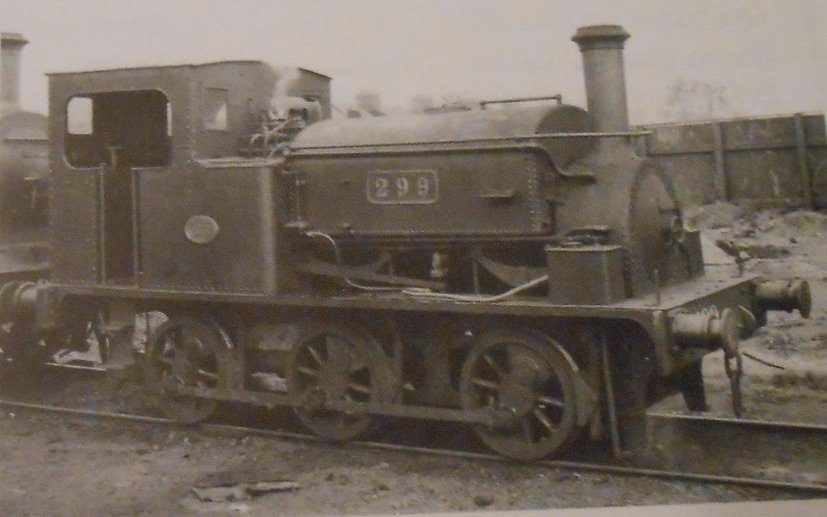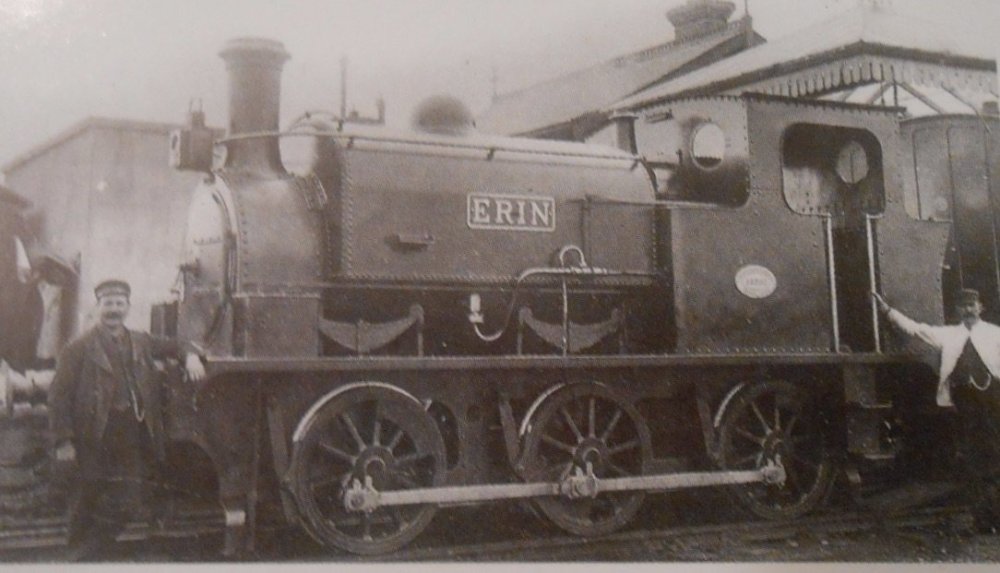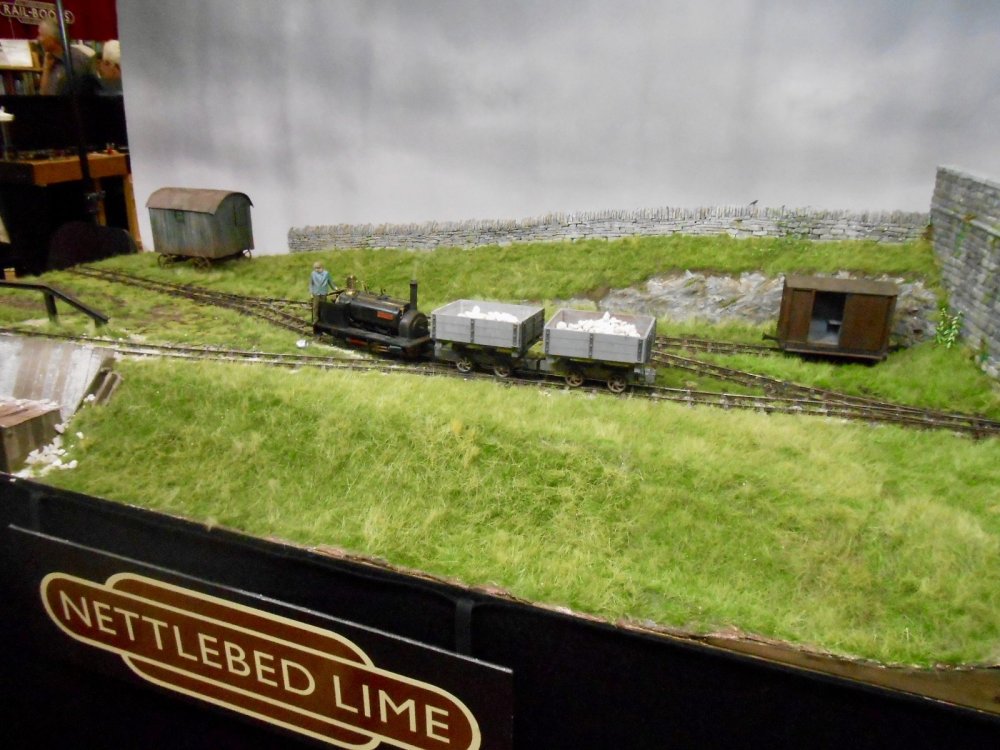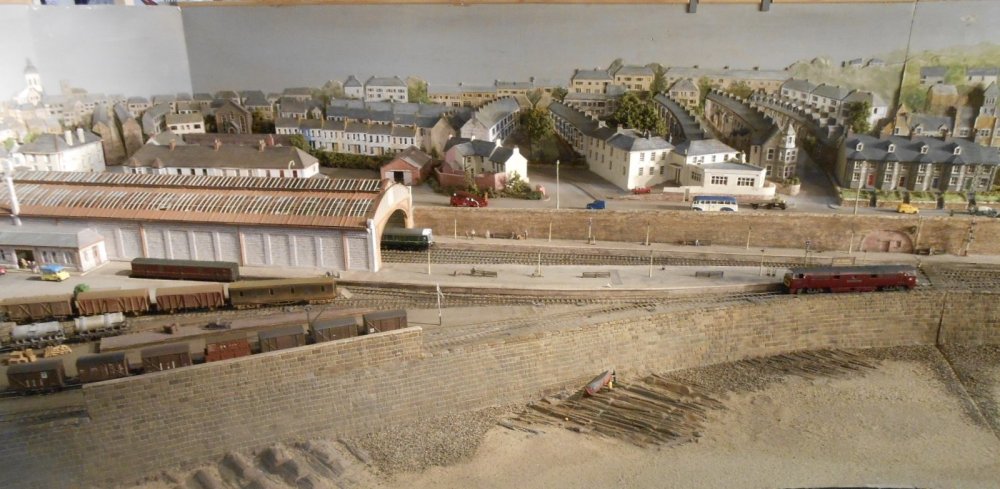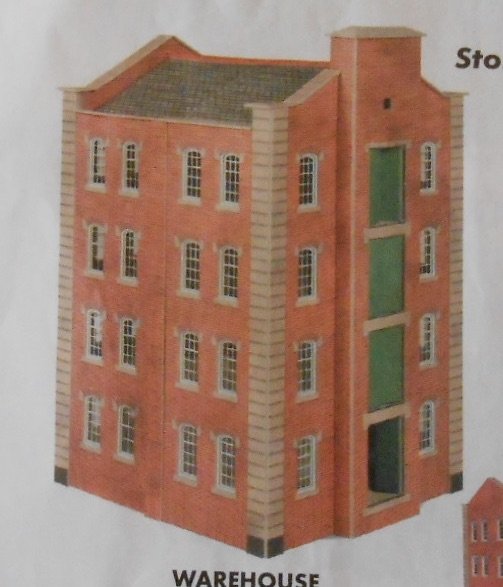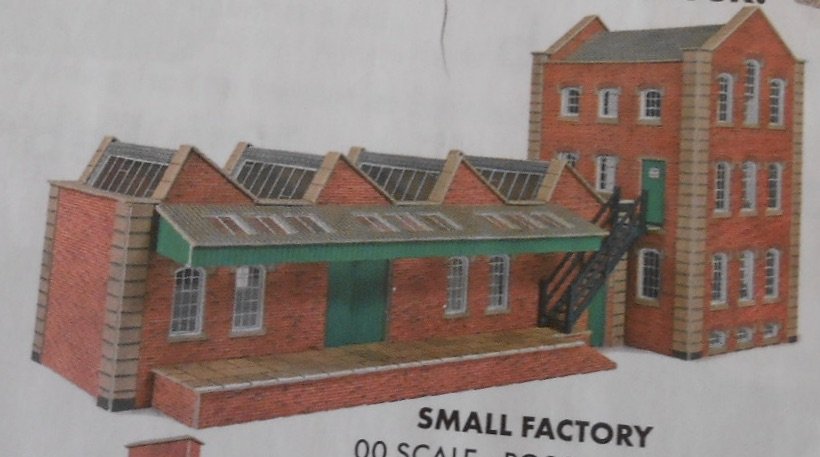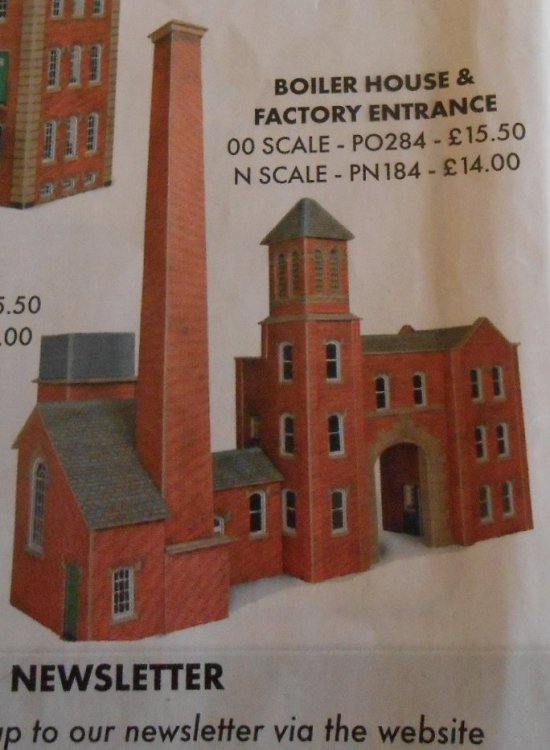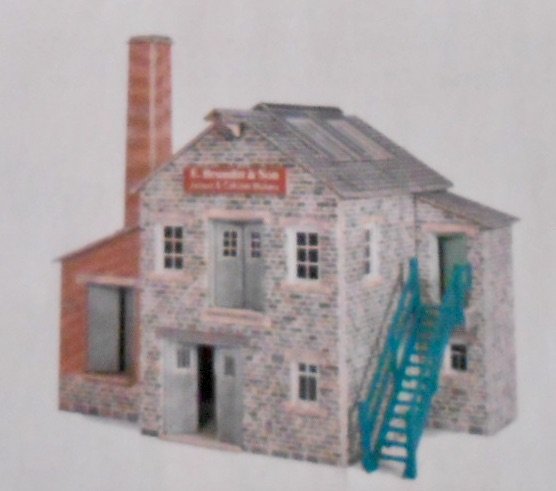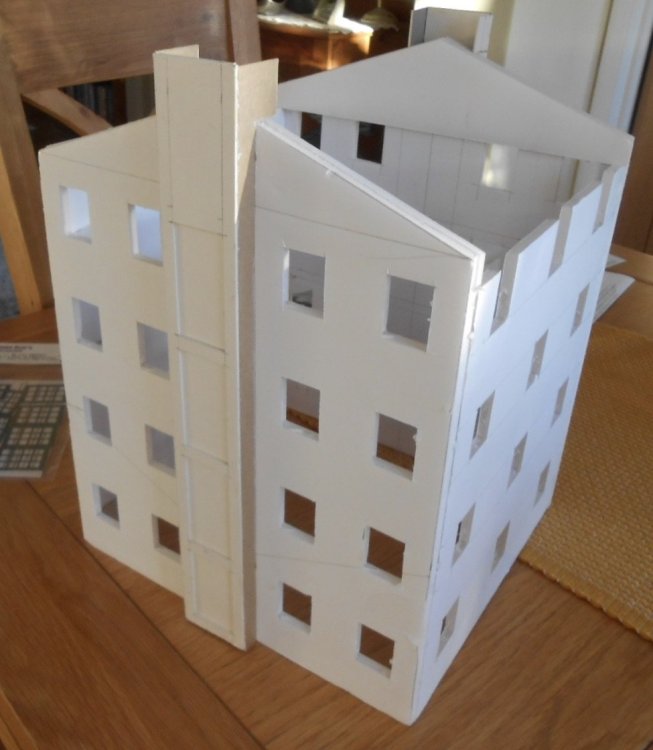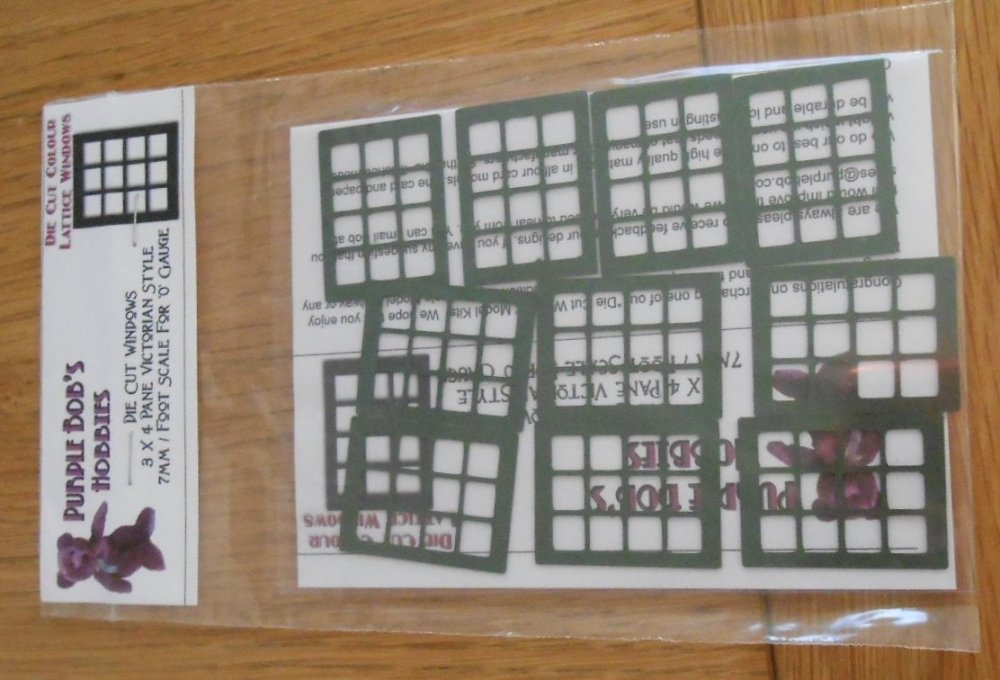
David Holman
Members-
Posts
4,359 -
Joined
-
Last visited
-
Days Won
117
Content Type
Profiles
Forums
Events
Gallery
Everything posted by David Holman
-
Just when you thought coaches could not get dearer, or more beautiful
David Holman replied to leslie10646's topic in News
Can only agree with Warbonnet on the complexity of coach building. Mass production presumably brings some economies, but trying building one of those coaches yourself, even from a kit, and it is going to take 30-40 hours minimum - even before that paint job. At minimum wage rates that is pushing £500... However, it seems that 4mm scale modellers are fast approaching the time when a loco and six coaches is going to exceed four figures. Not sure there is an easy answer to that as quality is never cheap, be it in terms of time or money. -
Be interested to know if the 88 can be regauged to 36.75mm. Given its tiny size suspect a broad gauge version would have to be wider.
-
Just when you thought coaches could not get dearer, or more beautiful
David Holman replied to leslie10646's topic in News
The paint job alone appears to be something of a masterpiece. Can't imagine how many hours that would take to do by hand. -
Magic! Hadn't thought about sanding down Wills random stone, let alone filling the mortar lines, but works really well. There is a clear (and very effective) artistic hand at work, Alan. Only have to look at your other models to see the connection. Proper job.
-
Should be ready for Tolworth on Sunday then . Just right for Enniskillen and what a great find.
-
Me too!
-
Very Iain Rice, Alan and none the worse for it either. Great to know all that lovely County Down stock will get its own bespoke setting.
-
Schull and Skibberish... A while ago, I sent off for one of the Alphagraphix card kit bargains - namely a complete Schull and Skibbereen train. Loco and three coaches for just four quid. I kid you not, a whole train, in 7mm scale at that. Ok, so it is just four sheets of printed A4 card, but as a starting point, these kits have much to commend them. Why Schull and Skibbereen you ask? Well, having sold my two Clogher Valley bogie coaches, it occurred to me that I could create a S&S train to go with my CVR 0-4-2Ts, as part of my Donegal/Swilly re-imagining for Finotnagh. Recently came up with a new name for it too - Swilybegs. Killybegs is of course one of the Donegal branches, so a version on Lough Swilly has, for me, a nice ring to it. As for a Schull tram, as mentioned a while ago, a further, independent, branch north from the shores of Lough Swilly to Milford, Carraigart and Downies could make sense - especially if we assume the Potato Famine was not as severe and likewise the subsequent depopulation. Works for me, anyway. For a change, decided to have a go at one of the coaches this week. Just plastic sheet and strip for the body, sitting on a Parkside 4mm wagon chassis. As a relief from chasing prototype fidelity, it can be quite enjoyable to do a bit of free lancing. One reason is that you can use formerly unwanted items like door handles from the scrap box. Another is not worrying too much over perfect dimensions. The photos show the first coach with a CVR loco in what could well be the tramway platform on a revamped Fintonagh/Swillybegs.
-
Waterford, Limerick & Western Railway Loco Photos
David Holman replied to Rob R's topic in Photos & Videos of the Prototype
As you say, there really aren't that many. Such a shame for a railway with some really elegant locomotives, especially the Robinson 4-4-0s. Rolling stock also sparse and it was all a long time ago now. -
Done the Ring of Kerry three times, each on a (very) soft day. Can't have been much fun on the Valencia Harbour line, one of the few without a turntable - or very much else for that matter! At least the nearest one was only a few miles away.
-
North Star kit - so it will be very high quality. Seems complete too, so there is well over £200 worth of motor/wheels/gears there. Brand new, you'd be l looking at £600. Built two of Adrian Rowland's Sligo Leitrim Small Tanks - the instructions are very good and they went together really well.
-
Built that Slater's kit back at the end of the last century (!) and very nice it was too, but that was narrow gauge, of course and being such a tiny engine AND with outside cylinders, not sure I'd want to do one in broad gauge. Their MW 0-6-0T was equally nice and being inside cylinders would be a much more tempting proposition, assuming prototype fidelity of course...
-
The last two buildings for the Club layout are now largely done, so will post some pictures later of them all in situ. Looking at my stock prior to Tolworth, have decided to pass on the Ixion Hudswell Clarke. Although a very nice model, needs eventually trumped wants because I already have seven locos for my 1900s period and only five tracks in the fiddle yard! For the uninitiated, shown below are WL&W 0-6-0 Shannon, MGW 4-4-0 Wolf Dog and E class 0-6-0T, GS&W 2-4-2T and 101 0-6-0, plus a Hunslet 0-4-2T and Sligo Small Tank. However, the ultimate deal breaker was the main gear on the middle axle, as [being nylon] I am far from confident that I could remove it without damage. Also realised that I do already have a little contractor's loco sitting on the shelf. My very first 0 gauge loco, it was made from an MTK kit [I think] about 30 years ago and has [sadly] mainly been used to practice painting and lining since then. One day, I must build a new chassis for it and give it a good makeover too.
-
That looks great - subtle weathering and very much at home on Enniskillen.
-
Being up near the ceiling suggest larger scale, as 00 would be too small to be seen. LGB in shop windows seems to work well both in terms of size and reliability.
-
A few pictures taken down the Club last night, showing how the warehouses are coming together. The biggest was certainly a trial of endurance, because although the basic structure is simple, there are 44 windows, each requiring a hole to be cut out, then a sill, lintel, frame and glazing, along with wrapping the brick paper around the inner walls. Literally hundreds of separate pieces and actions. The other warehouses are on a smaller scale, while there is also a 'north light' small factory. As you can see, the buildings are either side of the double track railway, with a small section of canal running through the scene too. Another possible project emerged last night too, with the opportunity to acquire a 7mm scale Ixion Hudswell Clarke contractors 0-6-0T. Have long thought one might make a worthy conversion to 5'3 gauge and it is certainly a very nice model - never mind RTR steam locos for the Irish scene being as rare as unicorn droppings. As you can see, there are no splashers to worry about, so it is mostly a case of can the wheels be moved out from 28mm back to back to 34mm? The answer to that is not initially, but the axles are 1/8th inch, so it should be possible to fit new, longer ones. An alternative idea is I have a set of Slater's Manning Wardle style wheels of the same diameter, which also use the same diameter axles. So, certainly a possibility, but what about prototype fidelity? Well, the Green Book has two options, namely Classes 299 and 300 [see below]. Both of these were built by Hunslet, but for 299 especially, the similarities are significant, though it does lack a clear coal bunker. Little locos like these were used by contractors when lines were first built and a few actually stayed on to work the smaller lines afterwards. Some actually got taken on by the mainline company and in the case of 299, even got an official number, while others [in best Sligo Leitrim fashion] just had a name. Ideally, I suppose, livery ought to be lined back [maybe with WL&W style lining], but for my early 1900s period on Northport Quay maybe the contractors red livery could yet prevail for a couple of years? Thoughts welcome!
-
Appreciate the sentiment but, much prefer the scenario of military shows where folk dress up and display vehicles, memorabilia etc to having people tooled up with all manner of lethal weapons, not to mention the legal right to use them. Many Americans love their guns, but can't seem to see just how much of a problem they create.
-
Spent a very pleasant morning there today [once I'd dried out from getting soaked just walking from the car park that it is], with the usual mix of very high standard layouts. All manner of scales, gauges, prototypes and periods, with a great selection of traders too. Stand out for me was a new, 16mm scale working diorama from Giles Favell, of radio control road vehicles fame. Giles has not been on the scene since Covid, so it was great to see him back. A large, but simple display involved an electric powered, live steam, quarry Hunslet, with a couple of side tipping chalk wagons. These were unloaded, via a basic [but prototypical] ramp [far left on the photo], while the loco's driver was able to look around as it progressed across the scene. Giles had another animated figure which could wave its arm too. All rather splendid and very engaging. A large 2mm scale layout also caught my eye. Called St Ruth, it featured some very clever compressed & half/low relief back scenes.
-
- 10
-

-
No water, no power and certainly no 'en suite'. Different world...
-
Yes, thanks Leslie. No idea who replaced me, but if it was the logging layout, then sounds a fine alternative.
-
Apologies Kelvin! Had to visit my 93 year old mother and could not get back in time. It was going to be my 125th show, but the first time in all the years of exhibiting that I've had to pull out. Was able to give the organisers a week's notice, but guess I should have posted something here. Northport Quay's next outing will be at the To!worth Show train in early November.
-
Not an article, but was surprised, delighted, indeed - honoured - to find that in the free 2025 calender with this month's Railway Modeller, Fintonagh is the picture for July. Lovely photo taken by CM editor Andrew Burnham.
-
Won that bet with myself then! This forum just keeps on giving.
-
Apologies if this has featured before, but was going through 'Railway Bylines Summer Special No3' the other day and found an interesting snippet in an article on the ex GER Y14 /LNER J15 0-6-0s. Strong, simple workhorses, not unlike their Irish counterparts and one of them - 65464 - actually carried the CIE Flying Snail emblem. It featured in a film called Happy Ever After, starring David Niven and Yvonne de Carlo, with scenes being shot on the Buntingford branch. Sadly no pictures available in the article, but am betting someone on the forum will find some! The album also contains a fine article by Des Coakham - 'Broad Gauge Branch Lines on CIE', including some very nice pictures with extended captions. Lovely stuff!
-
As a sojourn from recent activities, the workbench has become cluttered with large buildings for the Chatham Club layout. Called 'North Circular', it depicts a North London avoiding line, following the approximate route of the road of the same name. A double track, 0 Gauge oval, there are no points [apart from the storage sidings], but a lot of scenic features, designed to act as a backdrop to passing trains around its 10m x 4m footprint. The layout is due to appear at next year's Chatham Show in July, so I've taken it upon myself to create a section with a selection of warehouses and factories, plus a small canal basin. Inspiration comes from the Metcalfe card kitts, loosely scaled up to 7mm. The whole layout is very much built 'to a standard', making use of brick and tile paper, plus commercial window frames. I use 5mm foam board for the basic structure, varying the height of each storey from 8 to 10 feet. The overall shape of sides and ends are drawn and cut out out, then the pieces temporarily joined with masking tape, to check how each one fits on the layout. Once satisfied with this, the pieces come apart for window and door openings to be cut, followed by reassembly using triangles of thick card to brace the internal corners. Brick paper [downloaded from the web and printed at home] is then stuck to the foam board with pva. I cover over the window openings and then cut in afterwards, folding the paper inside. Things like brick lintels and stone window ledges, along with large corner stones help relieve the otherwise plainness of the model. Window frames are die cut ones from 'Purple Bob'. At around 50p each, they are less than a third the price of York Modelmaking ones and come pre-coloured too. The roof is made from mounting board, covered with slate paper [same as the bricks]. Gutters and soffit boards are a single piece of 2mm plastic sheet with one edge rounded off with a file, while drainpipes are 2.5mm square section plastic rod. Below is a larger warehouse, awaiting brick paper, windows and so on. Must admit, I haven't spent hours and hours on these models, but as said earlier, they are built to the same standards we've used on the rest of the layout, so hopefully everything should blend in well together. Also shows, to new/inexperienced members that with a little effort, it is easy to produce you own models. Cheaper too. Am tempted to suggest we add a third conductor rail, as it ought to be possible to use it to enable my broad gauge stock to stretch it legs. One day maybe!
.png.c363cdf5c3fb7955cd92a55eb6dbbae0.png)



